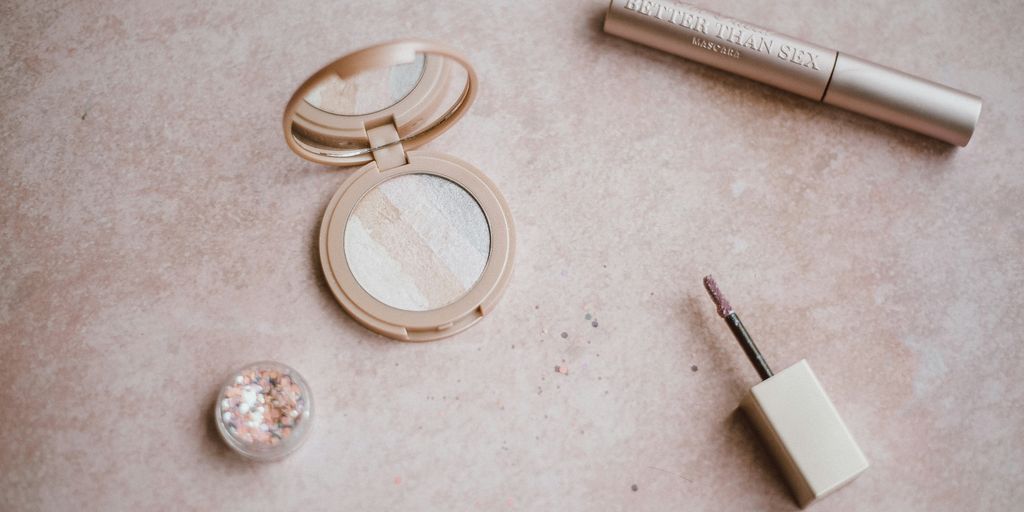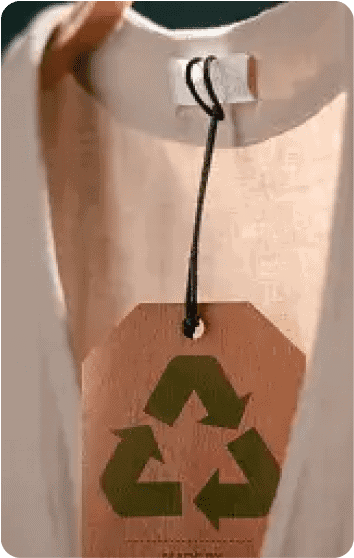If you’ve been wondering, “Is Tatcha cruelty free?” you’re not alone. Many beauty lovers are looking for brands that are kind to animals and the planet. Tatcha, a popular skincare line, claims to be committed to ethical practices. But what does that really mean? Let’s break it down and see how Tatcha stacks up against cruelty-free standards in 2025.
Key Takeaways
- Tatcha claims to be cruelty-free, but it’s important to check their testing policies regularly.
- Understanding what cruelty-free means can help consumers make better choices.
- Tatcha emphasizes transparency in sourcing ingredients, which is a good sign for ethical practices.
- Consumer opinions on Tatcha vary, especially on social media platforms.
- Staying informed about cruelty-free brands helps support ethical practices in the beauty industry.
Understanding Cruelty-Free Standards
What Does Cruelty-Free Mean?
So, what does it really mean for a product to be cruelty-free? It’s more than just a label. At its core, it means that the product, and its ingredients, weren’t tested on animals at any stage of development. This includes testing done by the company itself, its suppliers, or any third parties. The goal is to ensure no animals suffer for the sake of cosmetics or personal care items. It sounds simple, but the details can get pretty complicated.
Different Certifications Explained
There are a few different organizations that offer cruelty-free certifications, and each has its own standards. Some of the most well-known include:
- Leaping Bunny: This is a widely recognized certification that requires companies to have a supplier monitoring system in place to ensure no animal testing occurs at any point in the supply chain.
- PETA’s Beauty Without Bunnies: Companies that sign PETA’s statement of assurance verify that they do not conduct, commission, or pay for any animal testing.
- Choose Cruelty Free (CCF): Based in Australia, CCF is another trusted certification that has strict criteria for cruelty-free accreditation.
It’s good to know what these logos mean so you can make informed choices.
The Importance of Cruelty-Free Practices
Why bother with cruelty-free? Well, for starters, it’s about ethics. Many people believe that animals shouldn’t suffer for our beauty routines. Beyond that, there’s a growing awareness of the environmental impact of some animal testing methods. Choosing cruelty-free products is a way to support more humane and sustainable practices.
Making the switch to cruelty-free products is a small change that can have a big impact. It sends a message to companies that consumers care about animal welfare, and it encourages them to adopt more ethical practices. Plus, there are so many amazing cruelty-free brands out there now that you don’t have to sacrifice quality or effectiveness.
Tatcha’s Commitment to Ethics
Company Philosophy on Animal Testing
Tatcha states that they are against animal testing. It’s a core belief for them. They say they don’t conduct animal testing on their products or ingredients, nor do they ask others to do it for them. This commitment is a big part of their brand identity. They aim to create beauty products that are both effective and ethically made. It’s important to note that while they make these claims, the actual implementation can be complex, especially when dealing with global regulations.
Transparency in Sourcing Ingredients
Transparency is key when it comes to ethical sourcing. Tatcha tries to be open about where they get their ingredients. They focus on high-quality materials, and they want to make sure these materials are obtained in a responsible way. This includes:
- Working with suppliers who share their values.
- Checking the environmental impact of their sourcing.
- Making sure workers are treated fairly.
However, complete transparency can be hard to achieve. Supply chains are often complex, and it can be difficult to trace every ingredient back to its origin. Still, Tatcha’s efforts to be transparent are a step in the right direction.
Partnerships with Ethical Organizations
To further show their commitment, Tatcha partners with different organizations that promote ethical practices. These partnerships can take different forms, such as:
- Supporting organizations that work to end animal testing.
- Collaborating with groups that promote sustainable agriculture.
- Donating to charities that focus on social responsibility.
By working with these organizations, Tatcha hopes to make a bigger impact. It’s not just about their own practices, but also about supporting broader efforts to create a more ethical beauty industry. These partnerships add credibility to their claims and show they’re serious about their values.
Tatcha’s Testing Policies
Current Testing Practices
Okay, so let’s get into the nitty-gritty of Tatcha’s testing policies. As of 2025, Tatcha states they don’t conduct animal testing on their finished products. They also require their suppliers to adhere to the same standards. This means that, in theory, no part of the Tatcha supply chain involves animal testing. However, it’s important to note that some countries still require animal testing by law for imported cosmetics. This is where things get a little complicated. Tatcha navigates this by trying to sell in those markets while avoiding direct animal testing, which can be a tricky balance.
Changes Over the Years
Tatcha’s stance on animal testing hasn’t always been crystal clear. Over the years, like many brands, they’ve had to adapt to changing consumer expectations and evolving regulations. There was a time when their policies weren’t as explicitly defined, leading to some confusion. Now, they’ve made more of an effort to be transparent about their practices. It’s a journey, and it’s good to see brands responding to the demand for ethical beauty. Here’s a quick look at how things have shifted:
- Early 2010s: Less defined policies, some ambiguity.
- Mid-2010s: Increased awareness and initial steps towards cruelty-free practices.
- Late 2010s-Present: Clearer statements and efforts to align with cruelty-free standards.
Comparison with Industry Standards
When you look at Tatcha compared to other brands in the beauty industry, they fall somewhere in the middle. Some brands have gone above and beyond to get certified by organizations like Leaping Bunny or PETA, which involves rigorous audits and ongoing monitoring. Others are less transparent, making it hard to know what’s really going on. Tatcha’s approach is to state their policies and rely on their suppliers’ compliance. This is a common practice, but it does leave some room for doubt. It would be great to see them pursue third-party certification for extra reassurance.
It’s up to each consumer to decide what level of assurance they need when choosing beauty products. Some people are okay with a brand’s self-declaration, while others prefer the added security of a third-party audit. There’s no right or wrong answer, but it’s important to be informed and make a choice that aligns with your values.
Consumer Perception of Tatcha
Public Sentiment on Cruelty-Free Brands
People care more and more about where their products come from. It’s not just about how well a cream works, but also about the ethics behind it. Cruelty-free is a big deal. More people are actively seeking out brands that don’t test on animals. This shift is driven by increased awareness and a desire to support companies that align with their values. It’s not just a trend; it’s becoming a standard for many consumers.
Influence of Social Media
Social media plays a huge role in shaping opinions about brands. Influencers and regular users alike share their experiences and views on cruelty-free products. A single viral post can make or break a brand’s reputation. Social media amplifies both positive and negative feedback, making it essential for companies to be transparent and responsive. It’s a double-edged sword, but it definitely puts pressure on brands to do better.
Customer Reviews and Feedback
Customer reviews are super important. They give potential buyers real insights into a product’s quality and a company’s ethics. Brands that prioritize cruelty-free practices often receive more positive reviews and build stronger customer loyalty. People are willing to pay a bit more for products they believe in. Analyzing customer feedback can reveal how well a brand’s message resonates with its target audience and identify areas for improvement. It’s all about listening to what customers are saying and acting on it.
Consumers are increasingly using their purchasing power to support ethical brands. This trend is expected to continue, making it crucial for companies to adopt cruelty-free practices to remain competitive and maintain a positive brand image.
Here’s a quick look at how customer reviews might break down:
- Positive: Praising the brand’s commitment to cruelty-free practices.
- Negative: Expressing concern over lack of transparency or perceived ethical shortcomings.
- Neutral: Focusing solely on product performance without mentioning ethical considerations.
The Impact of Cruelty-Free Choices
Benefits for Animals and the Environment
Choosing cruelty-free products has a real impact. It’s not just a trend; it’s about making a difference. When you buy from brands that don’t test on animals, you’re directly reducing the demand for those practices. This means fewer animals suffer in labs. It’s a pretty straightforward connection, and it’s something we can all contribute to.
Beyond the animals, there’s an environmental aspect too. Many cruelty-free brands also focus on sustainable ingredients and packaging. This can lead to less pollution and waste, which is good for everyone. It’s like a ripple effect – one good choice leads to another.
Consumer Responsibility
We, as consumers, have more power than we think. Every purchase is a vote for the kind of world we want. It sounds a bit cliché, but it’s true. When we choose cruelty-free, we’re sending a message to companies that ethics matter. They pay attention to what we buy, and if enough of us make the switch, they’ll have to adapt.
It’s also our responsibility to stay informed. Don’t just take a label at face value. Do a little research, check certifications, and see what other people are saying. The more informed we are, the better choices we can make.
Supporting Ethical Brands
Supporting ethical brands isn’t just about avoiding cruelty; it’s about encouraging better business practices. When you buy from these companies, you’re helping them grow and innovate. This can lead to more ethical options becoming available, which benefits everyone.
Here are some ways to support ethical brands:
- Buy directly from their website.
- Leave positive reviews.
- Share their products on social media.
- Tell your friends and family about them.
By supporting ethical brands, you’re not just buying a product; you’re investing in a better future. It’s a small act that can have a big impact.
Navigating the Beauty Industry
Identifying Truly Cruelty-Free Brands
It can be tricky figuring out which brands are actually cruelty-free. Some companies might use clever wording or only apply the label to certain products. Look beyond the surface and do some digging. Here’s what to consider:
- Check for certifications from reputable organizations like Leaping Bunny or PETA. These groups have strict standards and audit companies to ensure compliance.
- Research the brand’s parent company. Sometimes, a brand might be cruelty-free, but its parent company isn’t. If the parent company tests on animals, it can still be a deal-breaker for some consumers.
- Read the fine print. Look for clear statements about animal testing policies on the brand’s website and packaging. If the information is vague or missing, that’s a red flag.
It’s important to remember that "cruelty-free" doesn’t always mean "vegan." Cruelty-free refers to animal testing, while vegan refers to the ingredients used in the product. A product can be cruelty-free but still contain animal-derived ingredients like beeswax or lanolin.
The Role of Regulations
Regulations regarding animal testing in the beauty industry vary a lot from country to country. Some places have banned animal testing for cosmetics altogether, while others still require it for certain products. This patchwork of rules can make things confusing for consumers.
- Pay attention to where a brand sells its products. If a brand sells in countries where animal testing is required by law (like China, as of today, 4/20/2025, for some imported cosmetics), it might be testing on animals to comply with those regulations.
- Support legislation that promotes cruelty-free practices. Contact your representatives and let them know that you care about ending animal testing in the beauty industry.
- Stay informed about changes in regulations. The rules are always evolving, so it’s important to stay up-to-date on the latest developments.
How to Make Informed Choices
Making informed choices as a consumer is all about doing your homework. Don’t just take a brand’s word for it – dig deeper and find out the truth for yourself. Here are some tips:
- Use online resources like cruelty-free directories and databases. These websites compile information on brands’ animal testing policies and certifications.
- Read reviews from other consumers. See what other people are saying about a brand’s ethics and transparency.
- Contact the brand directly. If you have questions about their animal testing policies, reach out to them and ask. A transparent brand will be happy to answer your questions.
Here’s a simple table to help you keep track of your research:
| Brand Name | Cruelty-Free Certification | Parent Company | Sells in China | Notes |
|---|---|---|---|---|
| Brand A | Leaping Bunny | Company X | No | |
| Brand B | PETA | Company Y | Yes | Check for exemptions |
| Brand C | None | Company Z | No | Contact brand for more information |
Future of Tatcha and Cruelty-Free Practices
Potential Changes in Policies
It’s tough to say exactly what Tatcha will do in the future, but we can look at current trends to make some educated guesses. One thing is for sure: consumer pressure matters. If more people demand transparency and ethical practices, companies listen. Tatcha might decide to invest more in alternative testing methods, moving away from any practices that could be seen as harmful. They could also expand their list of certified cruelty-free suppliers.
It’s also possible that Tatcha will face new regulations that force them to change their policies. Governments around the world are starting to take animal welfare more seriously, and that could mean stricter rules for the beauty industry.
Here are some potential changes we might see:
- Increased transparency about their supply chain.
- Investment in research and development of cruelty-free ingredients.
- Partnerships with animal welfare organizations.
Industry Trends Towards Ethical Practices
The beauty industry is changing. More and more brands are going cruelty-free, and consumers are paying attention. This shift is driven by a growing awareness of animal welfare and the environmental impact of cosmetics. It’s not just about avoiding animal testing; it’s about using sustainable ingredients and reducing waste.
Here’s how the industry is evolving:
- More brands are seeking cruelty-free certifications.
- There’s a greater focus on sustainable packaging.
- Consumers are demanding more information about ingredients.
What Consumers Can Expect
As consumers, we have a lot of power. We can choose to support brands that align with our values. In the future, expect to see even more options for cruelty-free beauty products. It will become easier to find information about a brand’s ethics and practices. The beauty industry will likely become more transparent overall, making it easier for consumers to make informed choices. It’s a win-win for everyone – animals, the environment, and consumers who want to feel good about what they’re buying.
| Feature | Current Trend | Future Expectation |
|---|---|---|
| Certifications | Increasing number of brands seeking certification | Widespread adoption of cruelty-free certifications |
| Transparency | Some brands are transparent | Greater transparency across the industry |
| Consumer Choice | Growing availability of cruelty-free options | Abundance of ethical and sustainable choices |
Tatcha is looking ahead to a future where beauty and kindness go hand in hand. They are committed to being cruelty-free, ensuring that no animals are harmed in the making of their products. This dedication not only reflects their values but also sets a standard for the beauty industry. If you want to learn more about how Tatcha is leading the way in cruelty-free practices, visit our website for more insights!
Final Thoughts on Tatcha’s Cruelty-Free Status
So, after digging into Tatcha’s practices, it seems like they do care about being cruelty-free. They don’t test on animals, and they say their suppliers don’t either. But, there’s always a bit of gray area, especially since they sell in places where animal testing is required by law. It’s a mixed bag, really. If being cruelty-free is super important to you, it might be worth keeping an eye on how things change in the future. Brands can shift their policies, and it’s good to stay informed. At the end of the day, you have to decide what feels right for you. Tatcha has some great products, but make sure you’re comfortable with their ethics before you buy.
Frequently Asked Questions
What does it mean when a brand is cruelty-free?
When a brand is called cruelty-free, it means they do not test their products on animals. This is important for people who care about animal rights.
Are there different types of cruelty-free certifications?
Yes, there are several certifications that brands can get to show they are cruelty-free. Some well-known ones include Leaping Bunny and PETA.
Why are cruelty-free practices important?
Cruelty-free practices are important because they help protect animals from suffering. They also encourage companies to find better ways to test their products.
What is Tatcha’s stance on animal testing?
Tatcha believes in being kind to animals and does not test their products on them. They are committed to ethical practices.
How do customers feel about Tatcha being cruelty-free?
Many customers love that Tatcha is cruelty-free. They appreciate the brand’s commitment to ethics and often share their positive experiences online.
What should I look for in cruelty-free brands?
When looking for cruelty-free brands, check for certifications, read labels, and research the company’s testing policies to ensure they align with your values.








